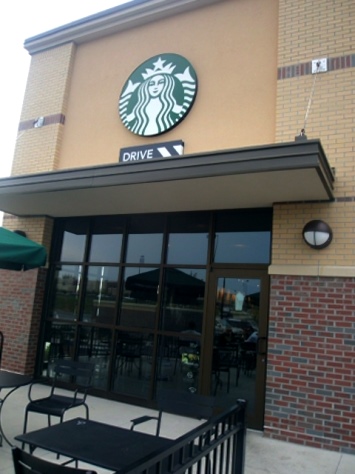by Jim McLean, KHI News Service
The lobbyist for a group of advanced practice Kansas nurses seeking a compromise with doctors on scope of practice legislation was not expecting much headway into the first round of talks.
But the marathon session held late last week changed Mary Ellen Conlee’s outlook.
“I’m much more optimistic,” Conlee said.
For three years, Conlee and a group of advanced practice registered nurses have been pushing for legislation to allow APRNs to establish their own primary care practices. Current law requires that ARPNs work under so-called “collaborative practice agreements” with supervising doctors.
The nurses say the agreements, which often don’t result in any meaningful collaboration or supervision, are a needless restriction on their ability to practice to the full extent of their training. Doctors say the agreements are needed to protect patients.
Many other states have broadened scope of practice laws to give APRNs more independence. But Kansas lawmakers have yet to hold a hearing on the issue, largely because of opposition from doctors.
The negotiating sessions are an attempt to craft a compromise bill before the Legislature returns in January.
Productive start
“I think both sides are cautiously optimistic that there is going to be a way to address this,” said Jerry Slaughter, executive director of the Kansas Medical Society. “There are no guarantees or anything, but I think both sides are working hard.”
Kansas doctors, Slaughter said, opposed the legislation because they thought it was overly broad and didn’t set clear limits on what ARPNs would and would not be permitted to do. The way doctors read the bill, it would have allowed nurses to perform surgery.
“They (the nurses) said, ‘Oh no, that’s not what we intend,’ and we said, ‘Well, if you read the bill that’s what it says.’ And they said, ‘That’s not what it says.’ We kind of went back and forth on that,” Slaughter said, characterizing the discussion to date.
“So, now we’re saying, let’s just be clear about it,” he said.
Much of the first session, which lasted several hours, was devoted to nurse educators describing in detail the academic and clinical training that ARPNs are required to complete. The discussion was led by Monica Scheibmeir, dean of the Washburn University School of Nursing, and Diane Ebbert, director of advanced practice programs at the University of Kansas School of Nursing.
“I think based on the questions that were asked, most of them (doctors) left the meeting with a much better understanding of the width and breadth of nurse training,” Scheibmeir said. “Content was covered that really helped bridge the gap in knowledge. There were some aha moments.”
But key issues remain
While off to a promising start, negotiators still must deal with issues at the heart of the dispute. And the two sides continue to see those issues very differently.
The nurses say that allowing APRNs to establish independent practices would increase access to quality primary care in areas of the state where there are too few doctors. But the doctors say that allowing APRNs – and other providers with less training – to independently practice medicine could produce fragmented and substandard care.
“We don’t look at this as a stand-alone issue,” Slaughter said. “We’re just trying to be consistent because we think there has to be a structure that promotes quality patient care. The rules have to be clear.”
And the trend of allowing mid-level practitioners to do more is creating a confusing environment for doctors, he said.
“It’s a very dynamic space with a lot of people with different training all trying to do the same thing,” Slaughter said. “We have to have a consistent approach here or this is just going to be a mess.”
In addition to APRNs, several provider groups ranging from paramedics and pharmacists to optometrists and dental hygienists are urging lawmakers in states across the country to broaden scope of practice rules.
Missouri lawmakers earlier this year passed controversial legislation to create the provider classification of assistant physician. The measure, signed by Gov. Jay Nixon in July, allows medical school graduates who haven’t completed their residencies to work in medically underserved areas of the state as primary care doctors.
It’s clear that many doctors see the trend as a threat. A report published in 2012 by the Physicians Foundation called it “one of the most persistent and vexing challenges facing physicians.” The report urged doctors to go on the offensive in an effort to restore the primary care physician as the “linchpin of the nation’s health care system.”
“Failure to do so – and the resulting influx of mid-level providers into that role – will ultimately leave us with a rudderless model of patient care that will result in greater fragmentation, higher costs and inferior outcomes,” wrote authors Stephen Isaacs and Paul Jellinek.
A column in the most recent issue of the Kansas Medical Society’s e-newsletter outlined the group’s concerns with the legislation.
The nurses lobbying for independent-practice legislation in Kansas say they’re not attempting to replace primary care doctors. Rather, they say, they’re attempting to expand access to primary care by practicing to the full extent of their training. And they say multiple studies show that allowing them to do so doesn’t compromise patient care.
Based on those studies, the Federal Trade Commission recently urged state policymakers to lift “anti-competitive” restrictions on APRNs, saying in a report that practice limits such as those imposed by Kansas law “can deny health care consumers the benefits of competition, without providing significant countervailing benefits.”
The next step in the Kansas negotiations, said Conlee, the lobbyist representing the nurses, is to get down to details on the issues that continue to stand in the way of an agreement.
“Both sides are going to come back with some specific suggestions for how to move forward,” she said.
A date for the meeting hasn’t been set, but Conlee said it will take place in late September or early October.
The KHI News Service is an editorially independent initiative of the Kansas Health Institute. It is supported in part by a variety of underwriters. The News Service is committed to timely, objective and in-depth coverage of health issues and the policy-making environment. More about the News Service at khi.org/newsservice or contact 785-233-5443.
www.khi.org/news




